Related Research Articles
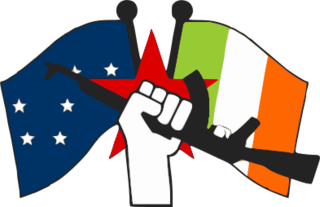
The Irish National Liberation Army is an Irish republican socialist paramilitary group formed on 8 December 1974, during the 30-year period of conflict known as "the Troubles". The group seeks to remove Northern Ireland from the United Kingdom and create a socialist republic encompassing all of Ireland. With membership estimated at 80–100 at their peak, it is the paramilitary wing of the Irish Republican Socialist Party (IRSP).

The Ulster Volunteer Force (UVF) is an Ulster loyalist paramilitary group based in Northern Ireland. Formed in 1965, it first emerged in 1966. Its first leader was Gusty Spence, a former Royal Ulster Rifles soldier from Northern Ireland. The group undertook an armed campaign of almost thirty years during The Troubles. It declared a ceasefire in 1994 and officially ended its campaign in 2007, although some of its members have continued to engage in violence and criminal activities. The group is a proscribed organisation and is on the terrorist organisation list of the United Kingdom.

The Red Hand Commando (RHC) is a small secretive Ulster loyalist paramilitary group in Northern Ireland that is closely linked to the Ulster Volunteer Force (UVF). Its aim was to combat Irish republicanism – particularly the Irish Republican Army (IRA) – and to maintain Northern Ireland's status as part of the United Kingdom. The Red Hand Commando carried out shootings and bombings, primarily targeting Catholic civilians. As well as allowing other loyalist groupings to claim attacks in their name, the organisation has also allegedly used the cover names "Red Branch Knights" and "Loyalist Retaliation and Defence Group". It is named after the Red Hand of Ulster, and is unique among loyalist paramilitaries for its use of an Irish language motto, Lámh Dearg Abú, meaning 'red hand to victory'.

The Irish People's Liberation Organisation was a small Irish socialist republican paramilitary organisation formed in 1986 by disaffected and expelled members of the Irish National Liberation Army (INLA), whose factions coalesced in the aftermath of the supergrass trials. It developed a reputation for intra-republican and sectarian violence as well as criminality, before being forcibly disbanded by the Provisional Irish Republican Army (IRA) in 1992.

Patrick Finucane was a Northern Irish lawyer who specialised in criminal defence work. Finucane came to prominence due to his successful challenge of the British government in several important human rights cases during the 1980s. He was killed by loyalist paramilitaries from the Ulster Defence Association (UDA), acting in collusion with British security services. In 2011, the British Prime Minister, David Cameron, met with Pat Finucane's family and apologised for the collusion.
Supergrass is a British slang term for an informant who turns King's evidence, often in return for protection and immunity from prosecution. In the British criminal world, police informants have been called "grasses" since the late 1930s, and the "super" prefix was coined by journalists in the early 1970s to describe those who witnessed against fellow criminals in a series of high-profile mass trials at the time.
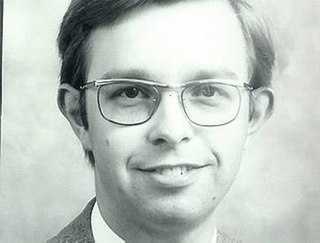
Edgar Samuel David Graham, MPA, BL was an Ulster Unionist Party (UUP) politician and academic from Northern Ireland. He was regarded as a rising star of both legal studies and Unionism and a possible future leader of the UUP. Graham was shot dead on 7 December 1983 by the Provisional Irish Republican Army (IRA) close to the main library at Queen's University Belfast, where he lectured in law.
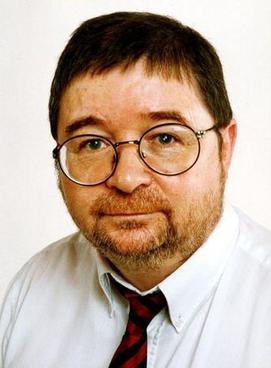
Owen Martin O'Hagan was an Irish investigative journalist from Lurgan, Northern Ireland. After leaving the Official Irish Republican Army and serving time in prison, he began a 20-year journalism career, during which he reported on The Troubles in Northern Ireland before being murdered, allegedly by dissident Ulster Loyalist paramilitaries in September 2001.
Mark Haddock is an Ulster loyalist paramilitary leader and RUC Special Branch informer in Northern Ireland, who has been named by various sources in connection with more than twenty-one killings. He is a member of the Ulster Volunteer Force (UVF), and was that organisation's North Belfast commander before his arrest by police in 2005.
Martin McGartland is a former British informer who infiltrated the Provisional Irish Republican Army (IRA) in 1989 to pass information to RUC Special Branch.
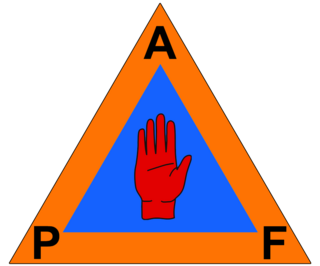
The Protestant Action Force (PAF) was a front group used by Ulster loyalist paramilitaries in Northern Ireland when claiming responsibility for a number of attacks during the Troubles. First used in 1974, attacks by individuals claiming to be members of the PAF killed at least 41 Catholic civilians. The PAF was most commonly used by members of the Ulster Volunteer Force (UVF). All of the attacks claimed by the PAF in Armagh and Tyrone counties from 1974 to 1976 have been linked to the Glenanne gang, which was a group consisting of members of the UVF Mid-Ulster Brigade along with rogue Ulster Defence Regiment (UDR) soldiers and Royal Ulster Constabulary (RUC) police officers. A six-year period of no attacks claimed by the PAF ended in 1982; during the 1980s, the PAF claimed 15 attacks in the Belfast area and two in County Armagh. UDR soldiers were convicted of two attacks in Armagh. The PAF claimed its last attacks in the early 1990s, all of which were in north Armagh and were alleged to involve members of the security forces.
Raymond Gilmour was an Irish National Liberation Army (INLA) and Provisional Irish Republican Army (IRA) volunteer who worked clandestinely from 1977 to 1982 for the Royal Ulster Constabulary (RUC) within those paramilitary organisations. His testimony was a main element of the supergrass policy, which was aimed at convicting large numbers of paramilitaries.

The Belfast Brigade of the Provisional IRA was the largest of the organisation's brigades, based in the city of Belfast, Northern Ireland.
Robert Lynd Erskine Lowry, Baron Lowry, PC, PC (NI), was a Lord Chief Justice of Northern Ireland and a Lord of Appeal in Ordinary. He was knighted in 1971, and created a life peer in 1979.
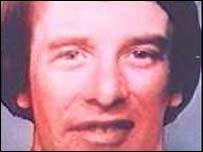
Brian Nelson was an Ulster loyalist paramilitary member during The Troubles in Northern Ireland. He was an intelligence chief of the Ulster Defence Association (UDA), and also a clandestine agent for the British Army's Force Research Unit during the conflict.
This is the Timeline of Irish National Liberation Army actions, an Irish republican socialist paramilitary group. Most of these actions took place as part of its 1975–1998 campaign during "the Troubles" in Northern Ireland. The INLA did not start claiming responsibility for its actions under the INLA name until January 1976 at which point they had already killed 12 people, before then they used the names People's Liberation Army (PLA) and People's Republican Army (PRA) to claim its attacks.
This is a timeline of actions by the Ulster Volunteer Force (UVF), an Ulster loyalist paramilitary group since 1966. It includes actions carried out by the Red Hand Commando (RHC), a group integrated into the UVF shortly after their formation in 1972. It also includes attacks claimed by the Protestant Action Force (PAF), a covername used by the UVF. Most of these actions took place during the conflict known as "the Troubles" in Northern Ireland.

John Dowey Bingham was a prominent Northern Irish loyalist who led "D Company" (Ballysillan), 1st Battalion, Ulster Volunteer Force (UVF). He was shot dead by the Provisional IRA after they had broken into his home. Bingham was one of a number of prominent UVF members to be assassinated during the 1980s, the others being Lenny Murphy, William Marchant, Robert Seymour and Jackie Irvine.

Robert Seymour was a Northern Irish loyalist from Belfast who was a member of the Ulster Volunteer Force (UVF). He served as the paramilitary organisation's East Belfast commander before being shot dead by the Provisional IRA behind his video shop in that part of the city in June 1988. His killing was claimed to be in retaliation for the UVF bombing of a nationalist pub in which three Catholics died.

The Irish National Liberation Army Belfast Brigade was the main brigade area of the Irish National Liberation Army (INLA). The other Brigade areas were in Derry which was split between two battalions, the first in Derry City, and the second battalion in south County Londonderry and County Armagh which was also split into two battalions, a south Armagh and a north Armagh battalion, with smaller units in Newry, east and west County Tyrone and south County Fermanagh.
References
- ↑ Fortnight:An Independent Review For Northern Ireland, p.5, 2–edition of 15 June 1986
- ↑ Fortnight:An Independent Review For Northern Ireland, p.5, 2–edition of 15 June 1986. Retrieved 22 September 2009
- ↑ Steven C. Greer, Supergrasses: A Study in Anti-Terrorist Law Enforcement in Northern Ireland, p.79
- ↑ Greer, p.79
- 1 2 Fortnight: An Independent Review For Northern Ireland, p. 5, 2–edition of 15 June 1986
- ↑ Greer, p. 80
- ↑ Fortnight: An Independent Review For Northern Ireland, p. 5, 2–edition of 25 June 1986
- ↑ Greer, p.80
- ↑ Cain: Sutton Index of Deaths, 1975
- 1 2 Greer, p.81
- ↑ Sutton Index of Deaths, 1975
- 1 2 "Cruel end at hands of serial offender; Ulster sex fiend caged". The Free Library. 17 May 2006]. Retrieved 19 March 2014
- ↑ Fortnight: An Independent Review For Northern Ireland, pp.5–6, 2–15 June 1986
- ↑ Fortnight: An Independent Review For Northern Ireland, p.5, 2–edition of 15 June 1986
- ↑ Steven C. Greer, Supergrasses: A Study in Anti-Terrorist Law Enforcement in Northern Ireland, p.280
- ↑ Fortnight: An Independent Review For Northern Ireland, p.5, 2–edition of 25 June 1986
- ↑ Frontline Online: The IRA and Sein Fein, Interview with Jim Gibney. Retrieved 22 September 2009
- ↑ Fortnight: An Independent Review For Northern Ireland, p.6, 2–15 June 1986
- Fortnight: An Independent Review For Northern Ireland, 2–edition of 15 June 1986, published by Fortnight Publications Ltd, Belfast, edited by Leslie Van Slyke. Retrieved 22 September 2009
- Steven C. Greer, Supergrasses: A Study in Anti-Terrorist Law Enforcement in Northern Ireland, Google Books. Retrieved 22 September 2009